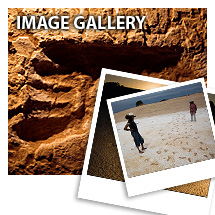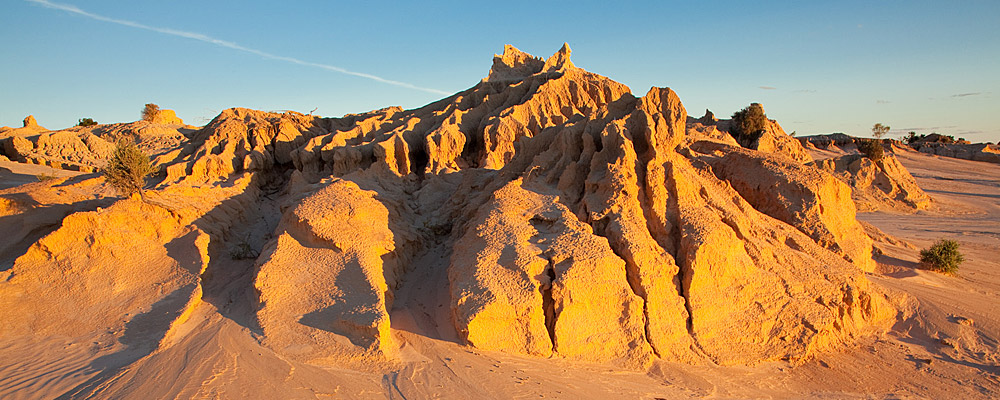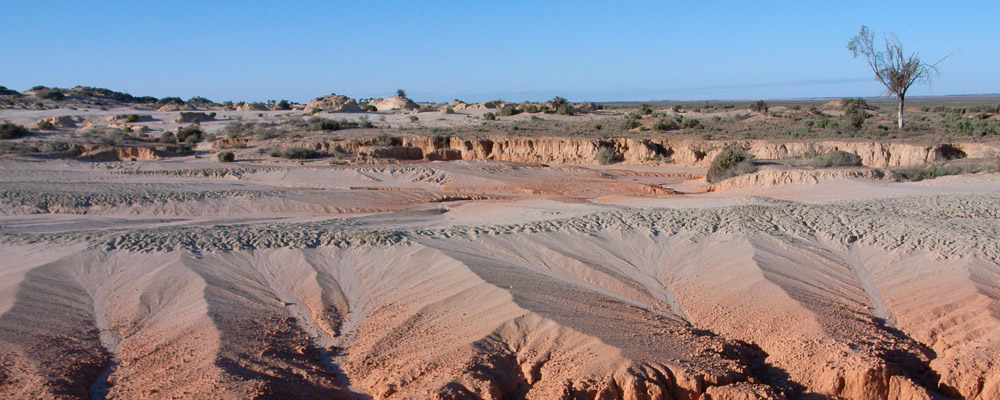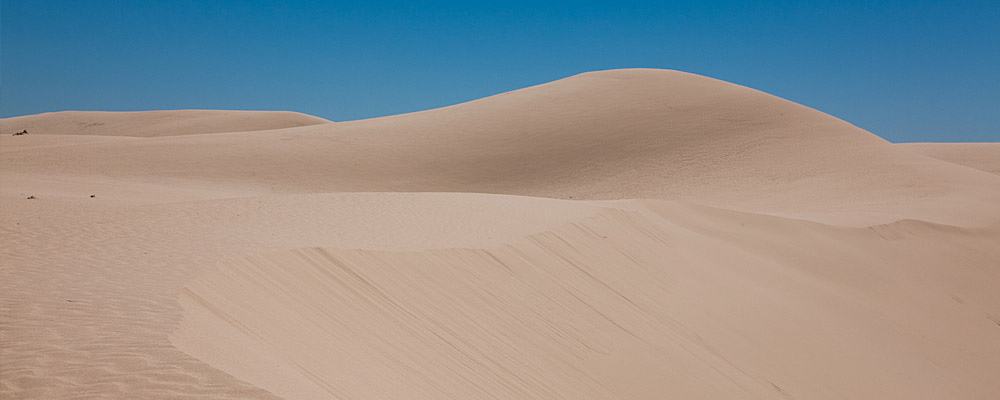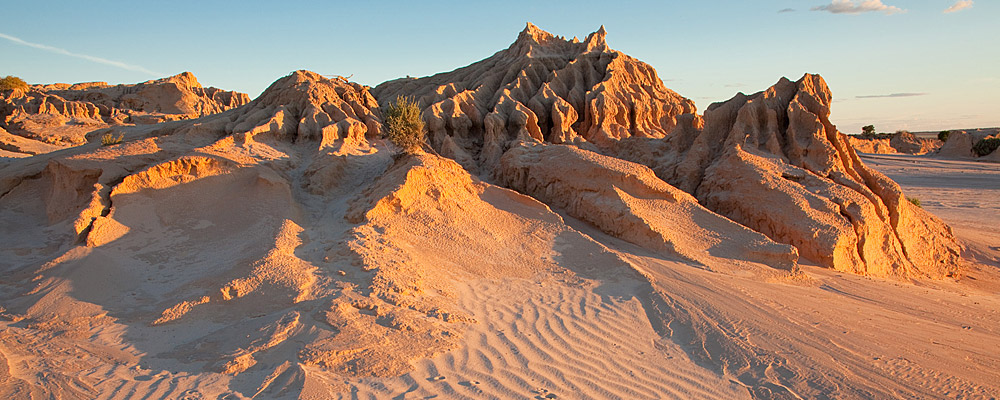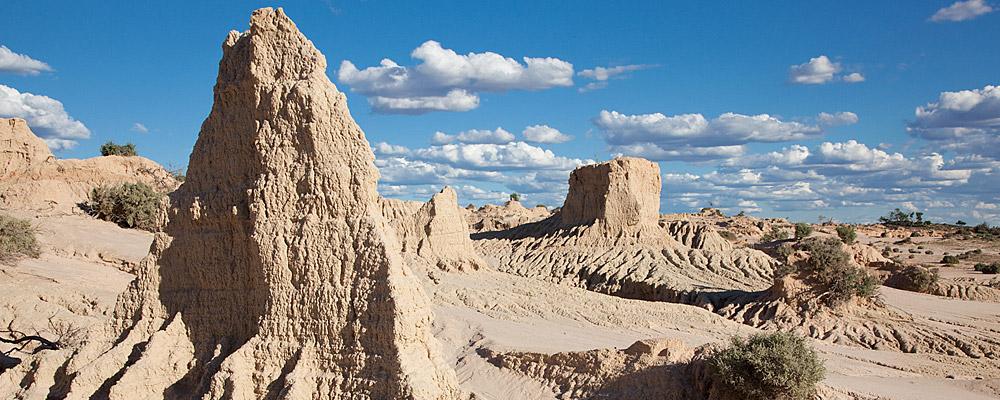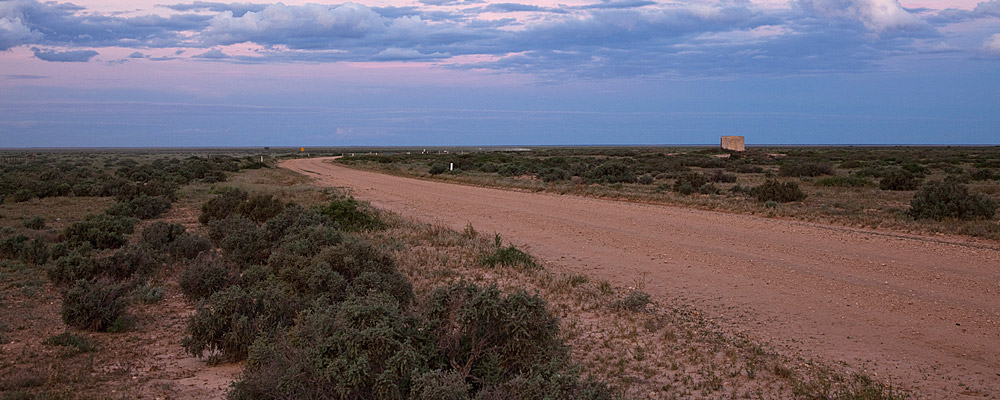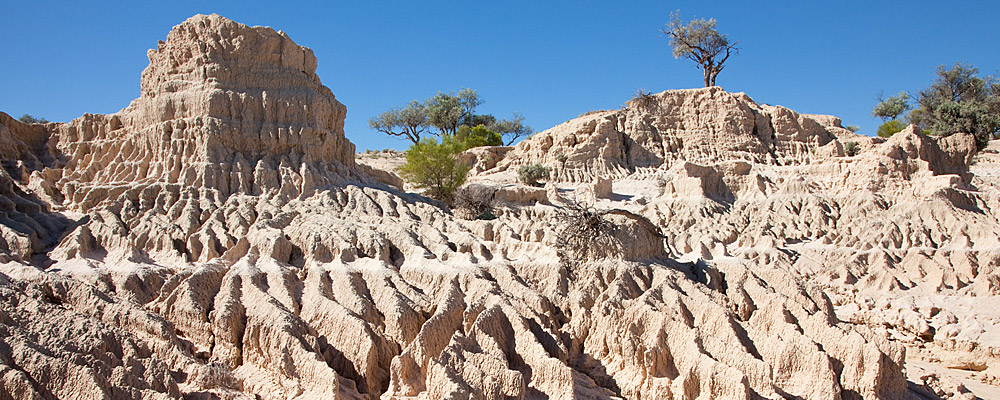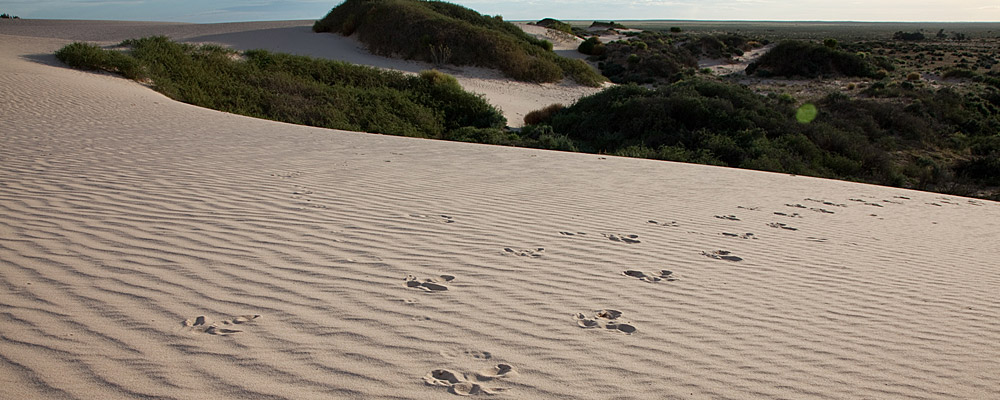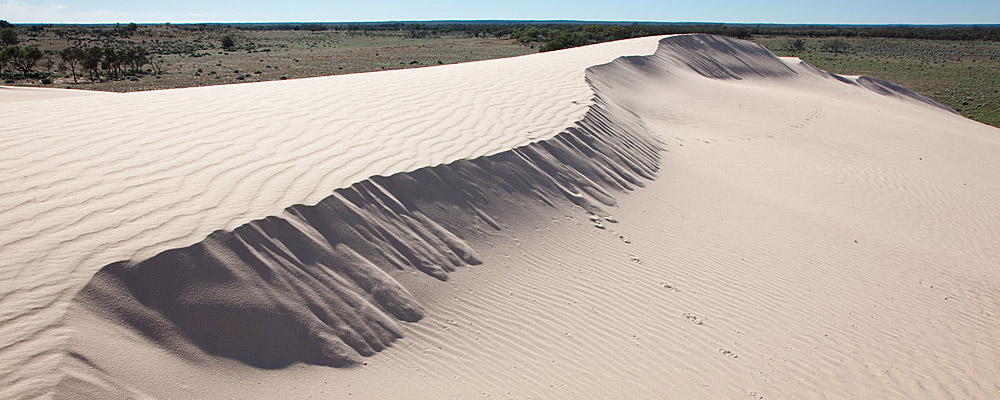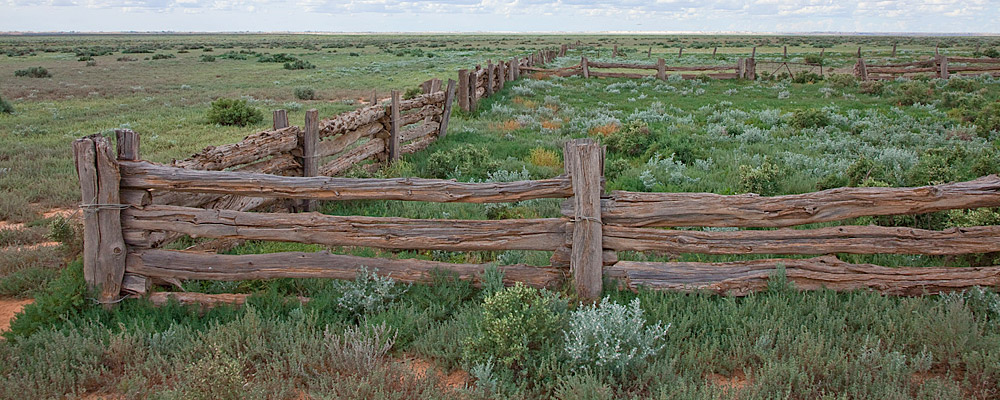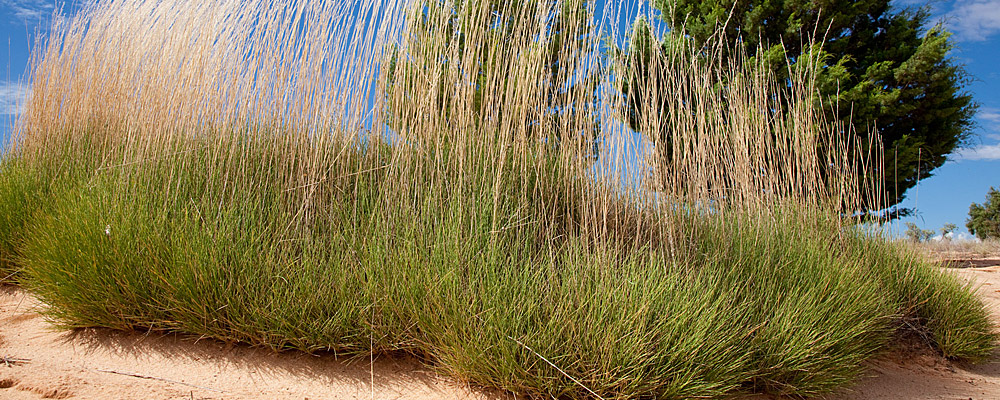Visit Mungo
Safety
Mungo National Park is in a remote area. There are few services nearby and it can be very hot and dry with little shade.
Visitors need to be well prepared to ensure a safe and enjoyable trip. Following a few simple guidelines will help.
Planning your visit
- Plan your visit carefully, using up to date information.
- Think about what you will be doing, how long you are staying and what you will need to take with you.
- There are no supplies of food, fuel or equipment available near the park. Drinking water is in limited supply. The closest town for food and fuel is Pooncarie, 81 km away.
- Ensure you take plenty of food, water, medical needs and equipment for your trip.
- Take appropriate clothing for the expected conditions.
- Find out about the latest road conditions from the National Parks and Wildlife Service (Buronga: +61 3 5021 8900), Mildura Tourism (+61 3 5027 3624) or local police.
Driving

- Most roads are unsealed and can become impassable after rain.
- Conditions vary on unsealed roads, so drive carefully.
- Watch out for sand, mud, dust, corrugations, loose gravel, unmarked bends and oncoming vehicles.
- Kangaroos and emus often cross the road, especially at dawn and dusk. They are usually in groups.
- Avoid travelling after dark and at dawn and dusk.
- Make sure your car is well maintained and in good condition.
- Carry a spare tyre, a jack and tools, and know how to use them.
- Carry extra water and warm bedding in case of breakdown.
- Consider carrying spare fuel.
- Use a good map, plus a satellite navigation device if you have one.
- Tell someone where you are going and when you expect to arrive.
Walking

- Plan your walk and know where you are going.
- Wear appropriate clothes and strong footwear.
- Cover up from the sun, wear a hat and sunglasses and use sunscreen on exposed skin.
- Be prepared for rain.
- Carry plenty of water and some food.
- Drink often.
- In cooler weather, carry a warm top.
- In summer, consider covering up and/or using insect repellent.
- Tell someone where you are going and when you expect to be back.
- Leave snakes and other wildlife alone.
